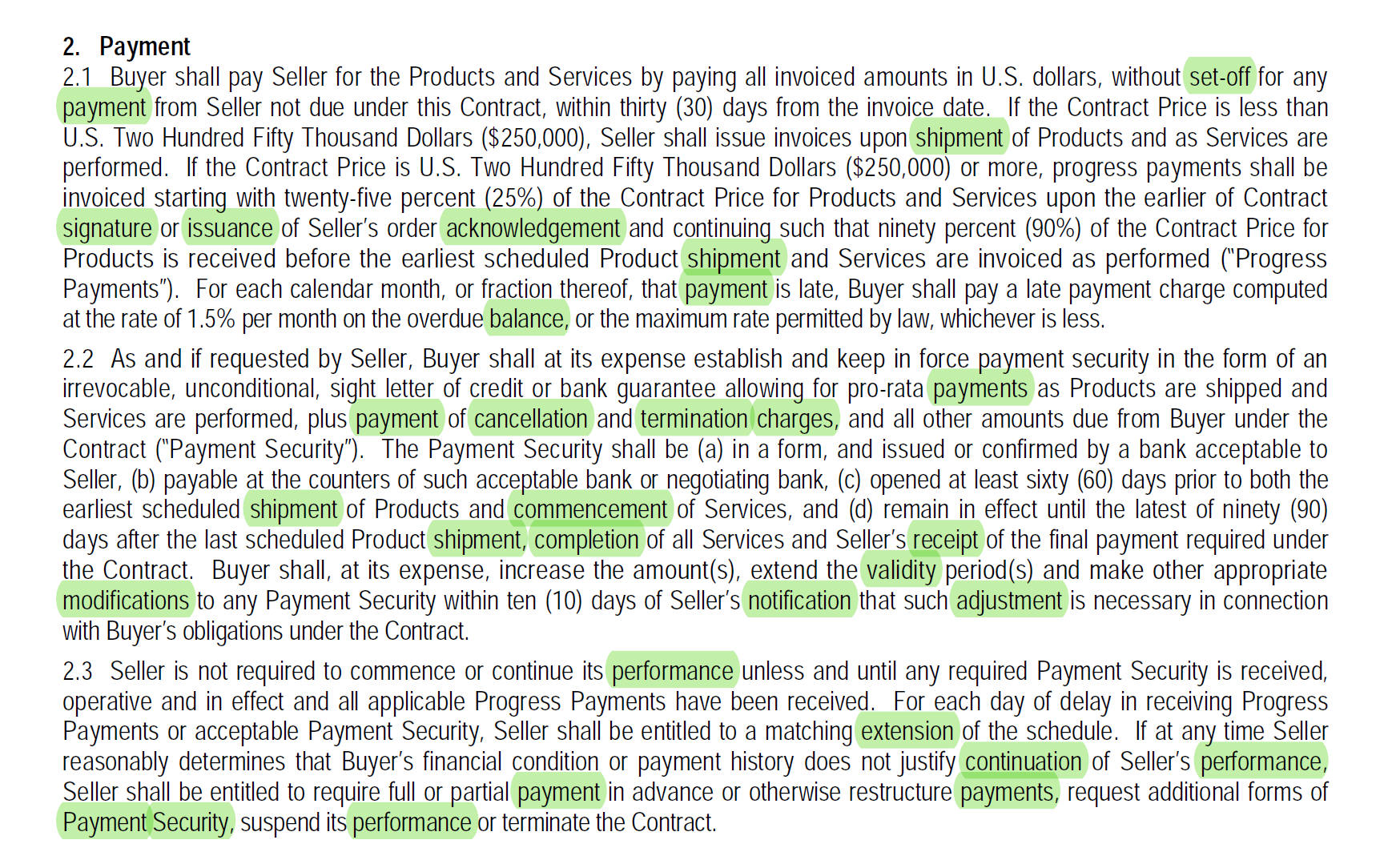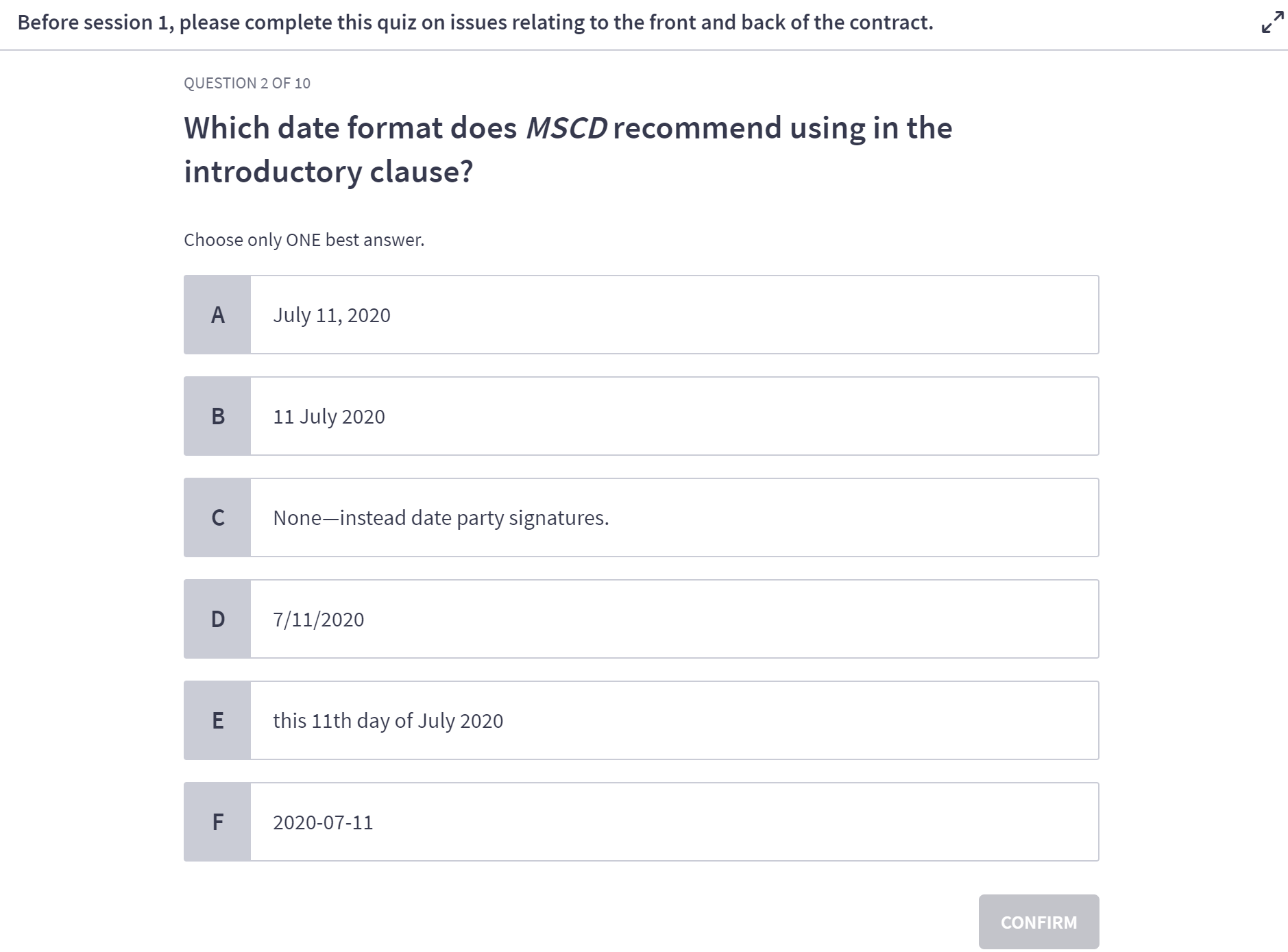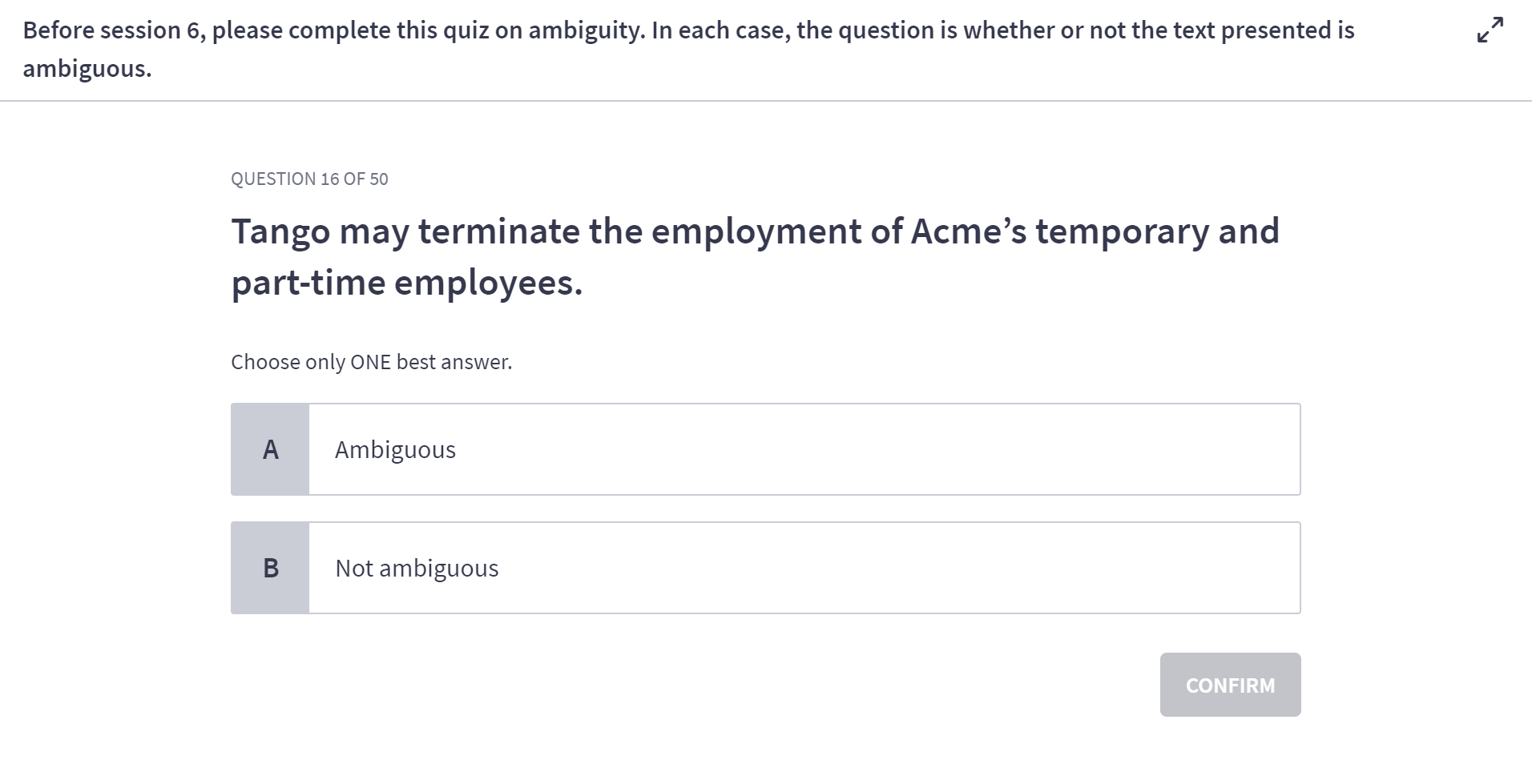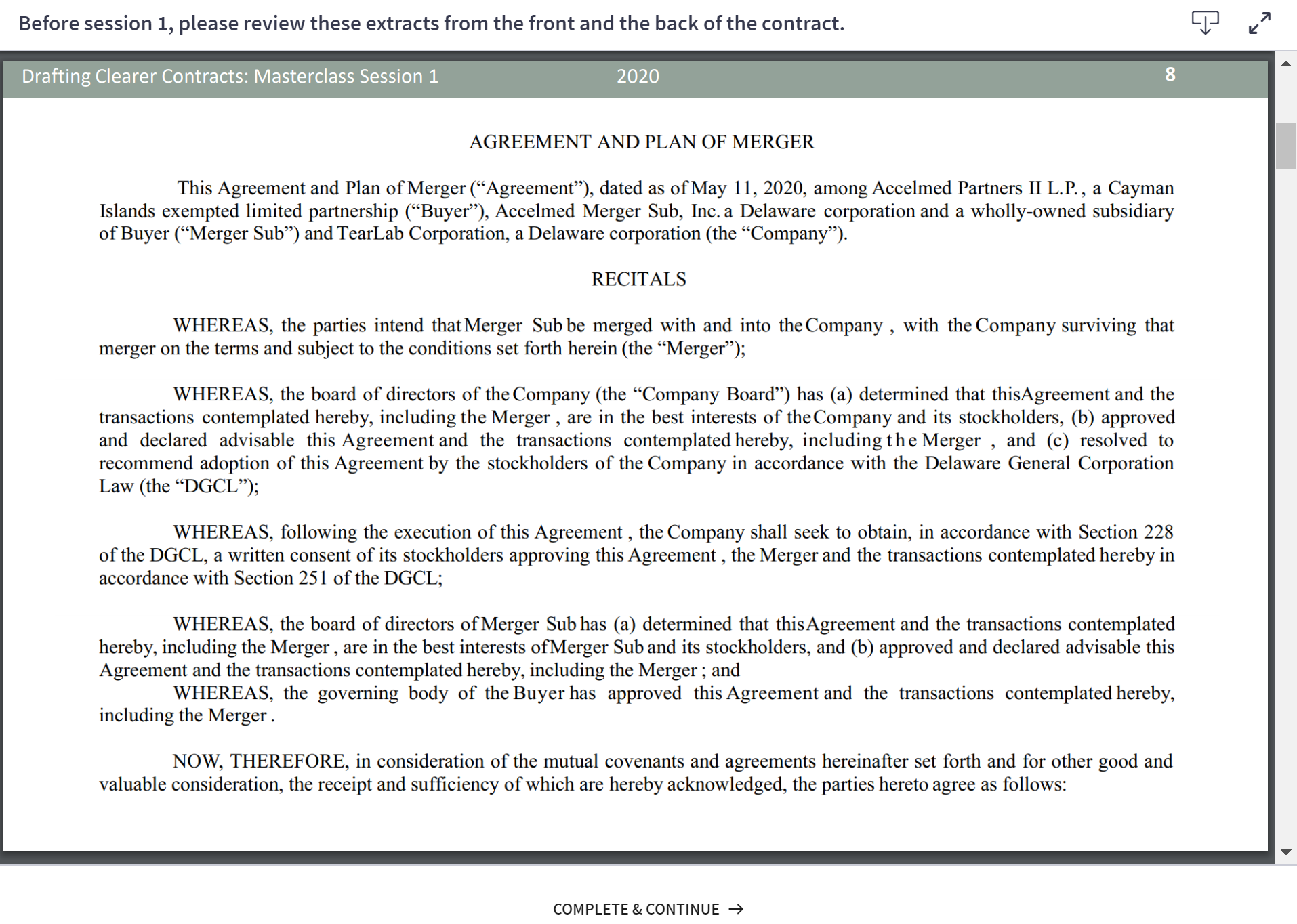With this blog post, yesterday I launched my new online course, Drafting Clearer Contracts: Masterclass. Now let me tell you more about what the course covers.
The course outline provides an overview of what’s required to prepare for each session and what we discuss in each session. For more detail, click on “Register Now” on the home page (or click here), then click on one of the series of the course that are on offer. That will pull up the course curriculum. Clicking the “+” to the right of each session will reveal the “lessons” covered in that session.
But you can get lost in that detail, so here’s a more general overview.
The course serves to help you become familiar with, and apply, the guidelines for clear contract language contained in A Manual of Style for Contract Drafting. That’s why you’re asked to prepare for most lessons by reading parts of MSCD.
But for many, reading by itself isn’t going to be enough. That’s why the eight live sessions of the course are built around exercises that aim to explicate the guidelines and show you why they matter and how they play out in practice. Those exercises are based on materials contained in the lessons for each of the eight sessions.
One kind of lesson is quizzes. The course offers quizzes on the front and the back of the contract, on the categories of contract language, on defined terms, and on ambiguity. They allow participants to check how much of the assigned reading has stuck with them. The questions are mostly straightforward. Here’s one from the session 1 quiz on the front and the back of the contract:
After you answer a question, you’re offered an explanation. Usually it will point you to the relevant part of MSCD; the more accustomed you become to consulting MSCD, the better.
And here’s a question from the 50-question quiz on ambiguity that’s part of session 6:
Each of the 50 questions simply asks you whether the text in question is ambiguous or not. I guarantee you’d find it eye-opening.
We also work through contract extracts that relate to a particular topic. Here’s one extract, plucked from EDGAR, that we look at when discussing the front and the back of the contract:
And here’s an extract of a standard set of terms to which I’ve added highlighting, to facilitate our discussion of a topic (I’ll let you guess the topic):
 We look at other contracts or contract extracts that I’ve highlighted in this manner. We spend most of session 3 looking at a big-company set of standard terms in which I’ve highlighted a bunch of problematic verb structures. We discuss however many we have time for, and I invite participants to explain what the problem is and how to fix it. (Afterward I make available my annotated version, which explains what I’d do in each case.) And we spend most of session 7 looking at another big-company set of terms from the perspective of someone on the other side of a deal.
We look at other contracts or contract extracts that I’ve highlighted in this manner. We spend most of session 3 looking at a big-company set of standard terms in which I’ve highlighted a bunch of problematic verb structures. We discuss however many we have time for, and I invite participants to explain what the problem is and how to fix it. (Afterward I make available my annotated version, which explains what I’d do in each case.) And we spend most of session 7 looking at another big-company set of terms from the perspective of someone on the other side of a deal.
We also use the latter set of standard terms as the basis for three redrafting exercises. In each, I ask participants to redo two parts of the standard terms. They can then consult my “before” and “after” versions, extensively annotated to explain the changes I made.
How we do those redrafting exercises is representative of how the course as a whole is structured. I don’t ask participants to submit their version of a given exercise, unless they want to—no one is being graded. Instead, I invite them to compare their version to mine. That’s ultimately more efficient.
In other words, my function isn’t to spoon-feed participants or to assess them. Instead, I curate the materials, I walk participants through the materials, I ask questions, and I offer explanations. It’s up to the participants to learn for themselves.
The course is structured this way because of its ambition. My day-long in-person Drafting Clearer Contracts seminar serves as a gentle introduction to MSCD, so I do most of the talking. By contrast, Masterclass aims to get participants farther along the learning curve, so it makes sense that participants have to do more work and more of the talking.
Most of the work takes place outside of the live sessions: it’s amazing how fast the hour goes. I estimate that for each session, eager participants can expect to spend three or four hours reading MSCD and working through the lessons.



